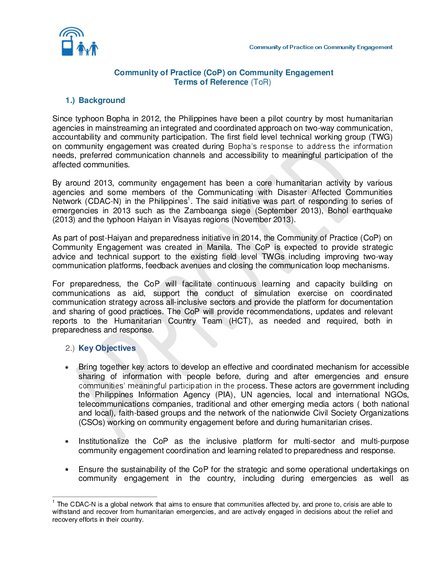
Since typhoon Bopha in 2012, the Philippines have been a pilot country by most humanitarian agencies in mainstreaming an integrated and coordinated approach on two-way communication, accountability and community participation. The first field level technical working group (TWG) on community engagement was created during Bopha’s response to address the information needs, preferred communication channels and accessibility to meaningful participation of the affected communities.
By around 2013, community engagement has been a core humanitarian activity by various agencies and some members of the Communicating with Disaster Affected Communities Network (CDAC-N) in the Philippines1. The said initiative was part of responding to series of emergencies in 2013 such as the Zamboanga siege (September 2013), Bohol earthquake (2013) and the typhoon Haiyan in Visayas regions (November 2013).
As part of post-Haiyan and preparedness initiative in 2014, the Community of Practice (CoP) on Community Engagement was created in Manila. The CoP is expected to provide strategic advice and technical support to the existing field level TWGs including improving two-way communication platforms, feedback avenues and closing the communication loop mechanisms.